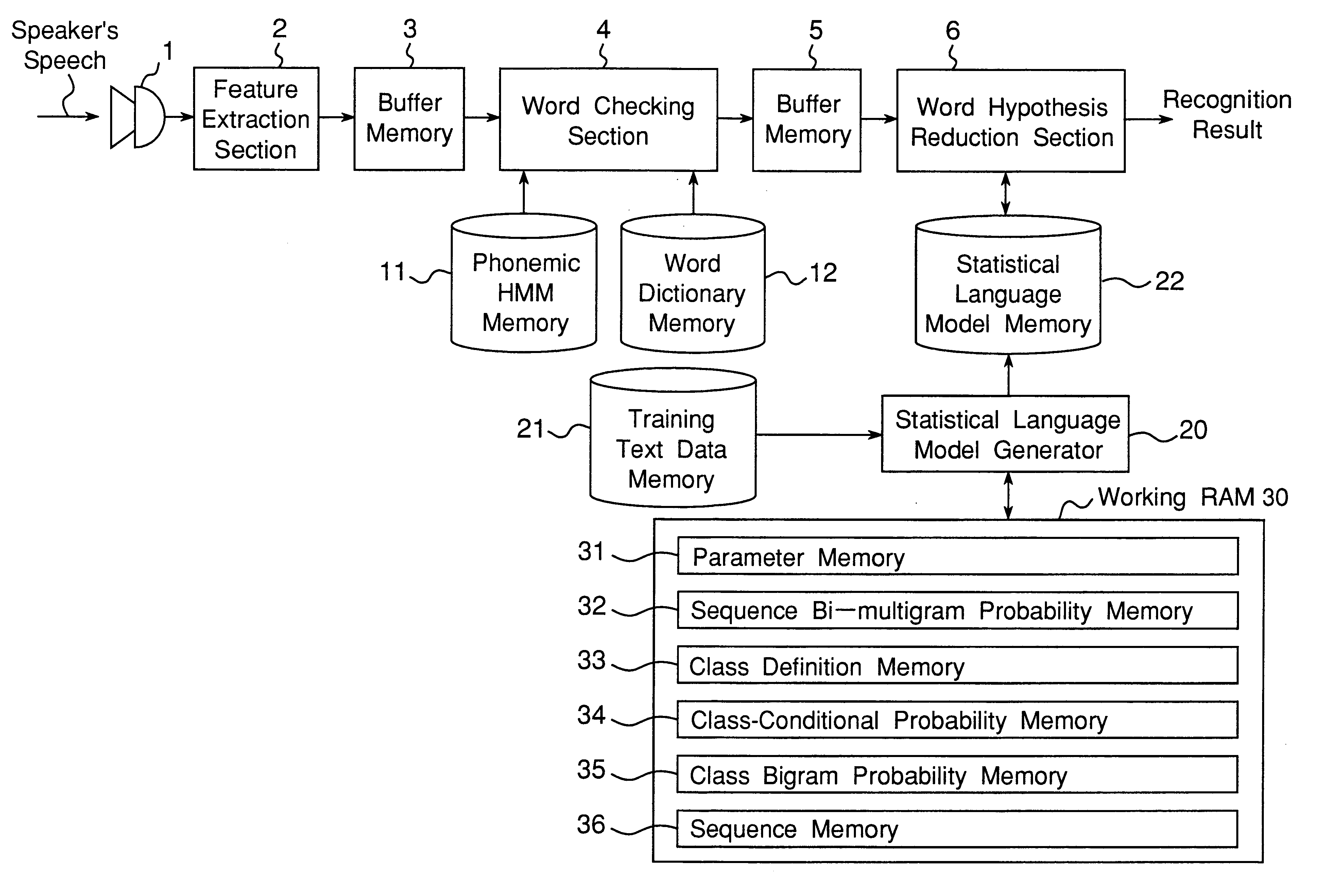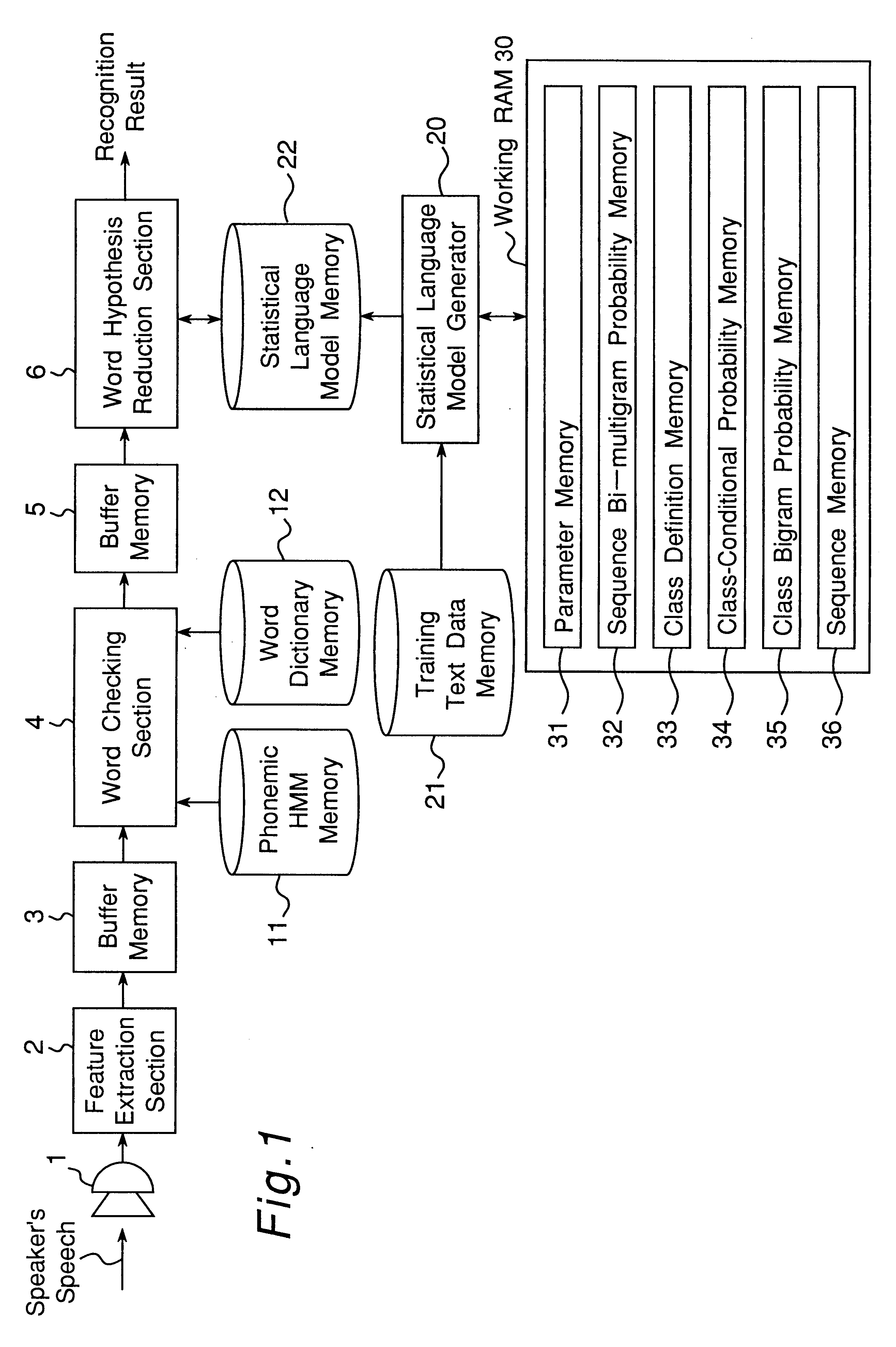Apparatus for generating a statistical sequence model called class bi-multigram model with bigram dependencies assumed between adjacent sequences
a technology of bi-multiplication model and applicability, applied in speech analysis, speech recognition, instruments, etc., can solve the problems of fixed length dependency between words, insufficient observation of all possible combinations of words, and limited size of training databas
- Summary
- Abstract
- Description
- Claims
- Application Information
AI Technical Summary
Benefits of technology
Problems solved by technology
Method used
Image
Examples
Embodiment Construction
s According to the Invention
The advantageous effects of the preferred embodiments according to the present invention are as follows:
(A) The preferred embodiments according to the present invention allows to learn both a sequence structure and a class structure, with bigram dependencies assumed between the sequences and class labels assigned to the sequences, from input strings of discrete-valued units, in such a way that the sequence structure and the class structure are jointly optimized so as to maximize the likelihood of the training data. This is an advantage over prior art, where the class structure and the sequence structure are optimized independently so that there is no guarantee that the obtained values are optimal with respect to each other.
(B) The preferred embodiments according to the present invention allows to learn both a sequence structure and a class structure, with bigram dependencies assumed between the sequences and class labels assigned to the sequences, from in...
PUM
| Property | Measurement | Unit |
|---|---|---|
| length | aaaaa | aaaaa |
| relative frequencies | aaaaa | aaaaa |
| size | aaaaa | aaaaa |
Abstract
Description
Claims
Application Information
 Login to View More
Login to View More - R&D
- Intellectual Property
- Life Sciences
- Materials
- Tech Scout
- Unparalleled Data Quality
- Higher Quality Content
- 60% Fewer Hallucinations
Browse by: Latest US Patents, China's latest patents, Technical Efficacy Thesaurus, Application Domain, Technology Topic, Popular Technical Reports.
© 2025 PatSnap. All rights reserved.Legal|Privacy policy|Modern Slavery Act Transparency Statement|Sitemap|About US| Contact US: help@patsnap.com



